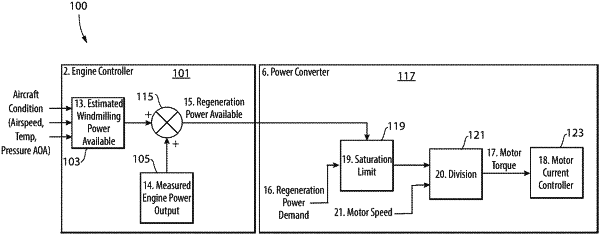| CPC B60L 53/24 (2019.02) [B60L 15/20 (2013.01); B60L 50/60 (2019.02); B60L 58/12 (2019.02); B64D 27/24 (2013.01); B64D 31/00 (2013.01); B64D 35/08 (2013.01); H02J 7/00032 (2020.01); H02J 7/0048 (2020.01); H02J 7/1469 (2013.01); B60L 2200/10 (2013.01); B64D 2027/026 (2013.01); Y02T 50/60 (2013.01)] | 18 Claims |

|
1. A battery charging system for a hybrid electric powerplant configured to determine a maximum available charging power available from windmilling and/or excess thermal engine power available, and to use up to the maximum available charging power and/or the excess thermal engine power available to charge a battery;
a control module configured to determine the maximum available charging power available from windmilling, wherein the control module includes a windmilling power available module configured to receive aircraft data and to determine the maximum available charging power available from windmilling.
|